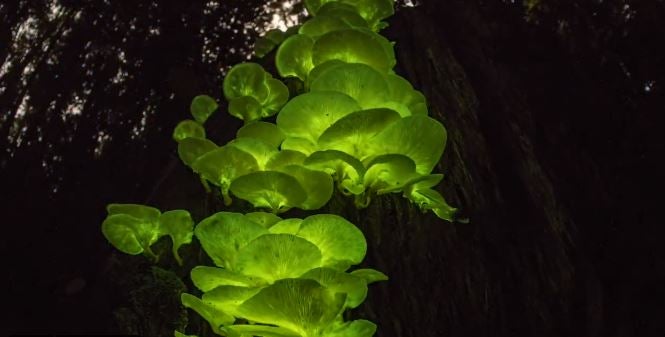Amazing photo of ‘ghost fungus’ captured on mushrooms in Australia
The photo of the bioluminescent fungi is one of entries for the Wildlife Photographer of the Year

Your support helps us to tell the story
From reproductive rights to climate change to Big Tech, The Independent is on the ground when the story is developing. Whether it's investigating the financials of Elon Musk's pro-Trump PAC or producing our latest documentary, 'The A Word', which shines a light on the American women fighting for reproductive rights, we know how important it is to parse out the facts from the messaging.
At such a critical moment in US history, we need reporters on the ground. Your donation allows us to keep sending journalists to speak to both sides of the story.
The Independent is trusted by Americans across the entire political spectrum. And unlike many other quality news outlets, we choose not to lock Americans out of our reporting and analysis with paywalls. We believe quality journalism should be available to everyone, paid for by those who can afford it.
Your support makes all the difference.Stunning photographs captured by award-winning photojournalist Juergen Freund shows glowing "ghost fungus" on a dead tree in a rainforest near Queensland in Australia.
The Natural History Museum, which hosts the "Wildlife Photographer of the Year" competition, has released a section of this year's “highly commended” images, including Mr Freund’s that show a "planet under pressure."
The German-based photographer had to crouch on the forest floor for at least 90 minutes to take eight five-minute exposures to capture the dim glow, the BBC reported.
The enthralling bioluminescent "Omphalotus nidiformis" native to Australia, is a large, irregular-shaped fungus with little or no stem. The poisonous fungus is often found growing in dense clusters at the base of living or dead eucalyptus during the autumn season after the rains.
The mushrooms use a class of molecules called luciferins, which when paired with enzyme and oxygen, releases light. A similar compound is found in other organisms such as fireflies, but for the mushrooms, the function is largely speculated to attract insects.
However, a 2016 study by scientists from the University of Adelaide found that in regards to these mushrooms, the bioluminescence could be just a byproduct of the chemicals that benefit the fungus in other ways.
The competition for its 57th edition received over 50,000 entries from photographers in 95 countries. The winners will be revealed on 12 October in an online awards show, which will be broadcast from the Natural History Museum in London.
“It was the overall quality of entries that took us by surprise. With most travel plans cancelled over the past year, photographers seem to have spent extra time considering what gems to submit,” Roz Kidman Coz, chair of the judging panel told the Museum.
Join our commenting forum
Join thought-provoking conversations, follow other Independent readers and see their replies
Comments